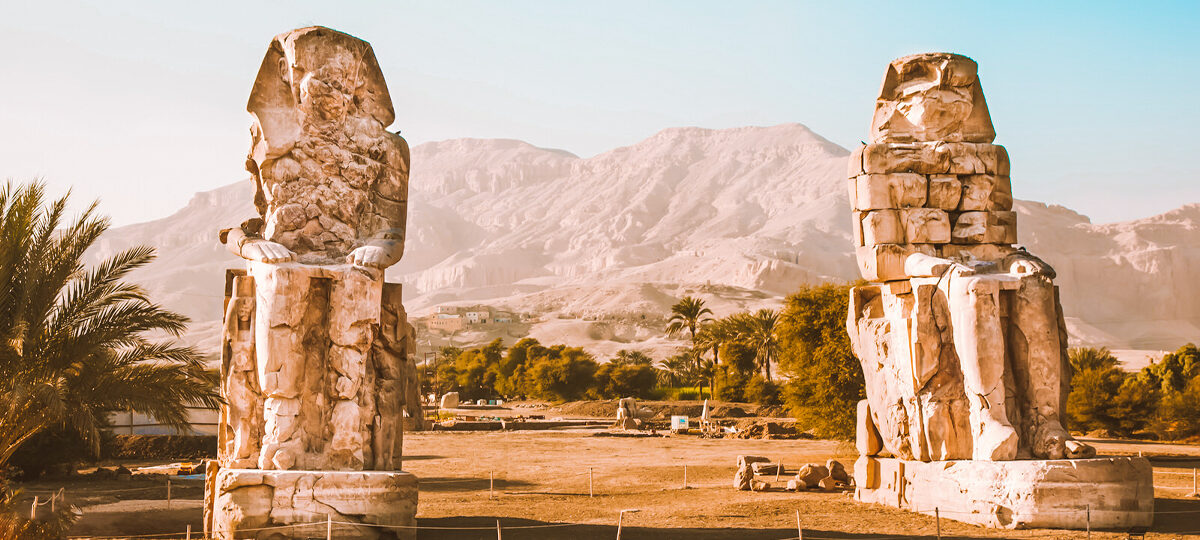Colossi of Memnon
The Colossi of Memnon, which are on the western coast of Luxor, are some of the most well-known and beautiful buildings from the Pharaonic era. The two huge statues called The Colossi of Memnon are all that are left of Amenhotep III’s funeral complex near Medinet Habu.
The Colossi of Memnon.

During the time that Amenhotep III was king (around 1386–1349 B.C. ), the two huge stone statues known as the Colossi of Memnon were ordered and built as huge statues of the king The king is shown sitting on a throne with his hands on his thighs. He is wearing the nemes headdress, which is typical of Egyptian kings. Although it has worn down, you can still see the outline of the protective cobra standing on his forehead.
Amenhotep III.
Both of these behemoths are 14 metres tall and weigh a hefty 700 tonnes. The pedestals they stand on add almost 4 metres to their height and about 600 tonnes to their weight. So, when both colossi are standing on their bases, they add up to a height of 18 metres, with the northern colossus being a fraction of a metre taller. Taking into account how broken the heads and headdresses are, it’s possible that the whole thing should be close to 21 metres tall.
The statues were carved out of a single piece of quartzite by men. It may have come from the Gebel el-Ahmar quarries, which are outside of Cairo. They were put at the entrance to the tomb of
Amenhotep III. This pharaoh of Egypt’s 18th dynasty ruled around 3,400 years ago.
This temple, which was about a kilometre long, was a huge place of worship where the pharaoh was seen as a god on earth. The complex of temples was much bigger than Egypt’s famous Karnak.

The inscriptions on the side panels of each of The Colossi of Memnon are still there. The hieroglyphs with the pharaoh’s protocol stand out, as do the cartouches they include. The most interesting parts of the temple are the bas-reliefs of Hapi, the god of the Nile. These pictures show what the Nile has given to Upper and Lower Egypt.
This is a common theme in pictures of pharaonic thrones, and it shows that the pharaoh was in charge of both of Egypt’s most important areas.
The Temple of Amenhotep III used to be a very impressive building, but it hasn’t been taken care of well and is almost gone because of earthquakes, reusing its materials, and being used as a quarry over a long period of time. And some of its construction is made of adobe, which has taken a lot of damage from the weather and floods in this area.
In 27 BC, there was an earthquake that hurt the giants of Memnon. People then started saying that the sculptures “sang” every morning at sunrise. The cracks in the stones that make the sound has been found to be the cause of the groaning or singing sound, which stopped when the damage was fixed.
Like many other structures, like the huge sphinx of Giza, the giants of Thebes inspired both awe and fear, especially during the dark Middle Ages that plagued Egypt from the beginning of the 19th century onward.
People often think that the Mamluk forces shot the sculptures with cannons, which made their faces and limbs look strange. Especially since the 18th-century Egyptian Expeditions.

